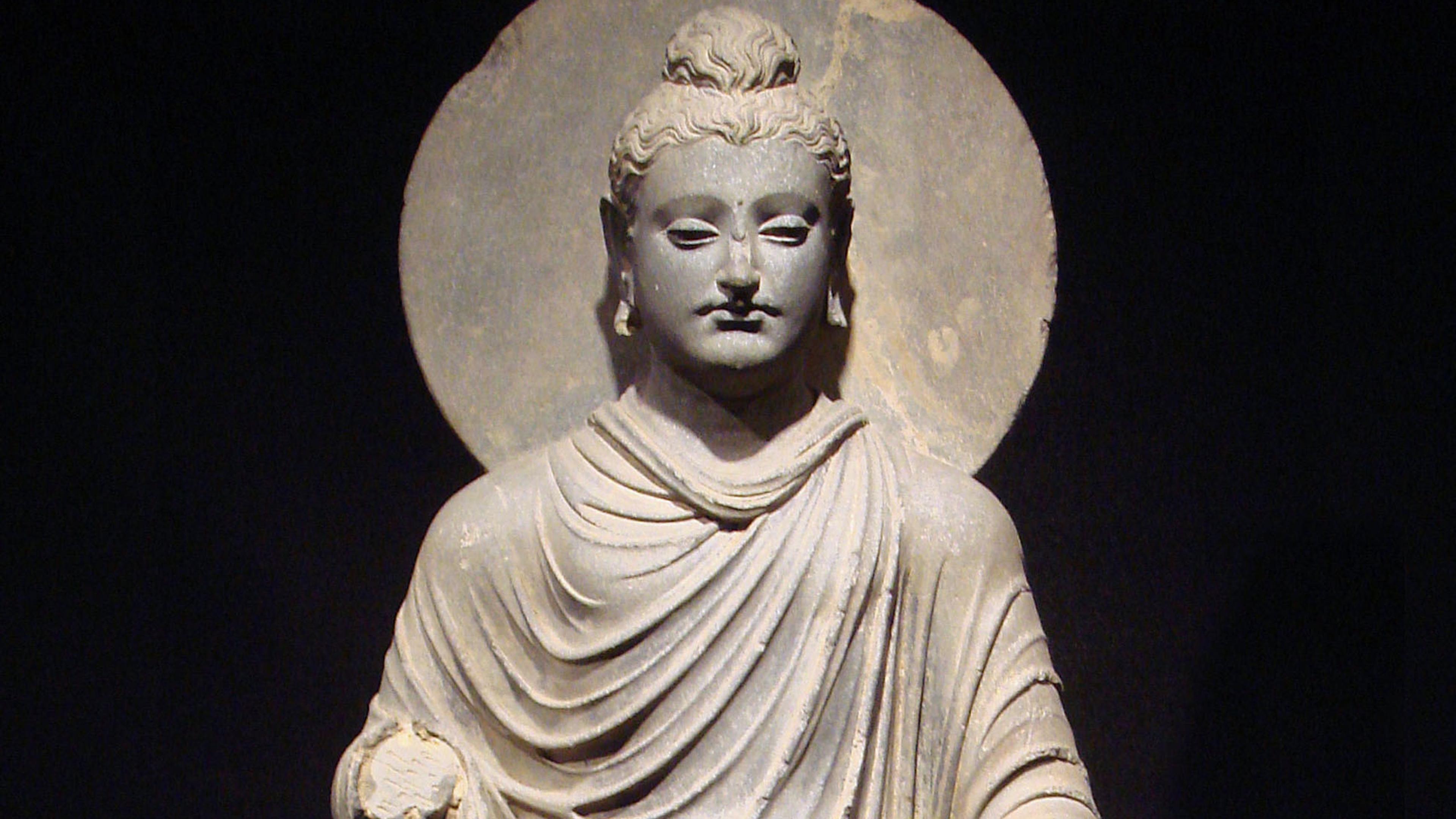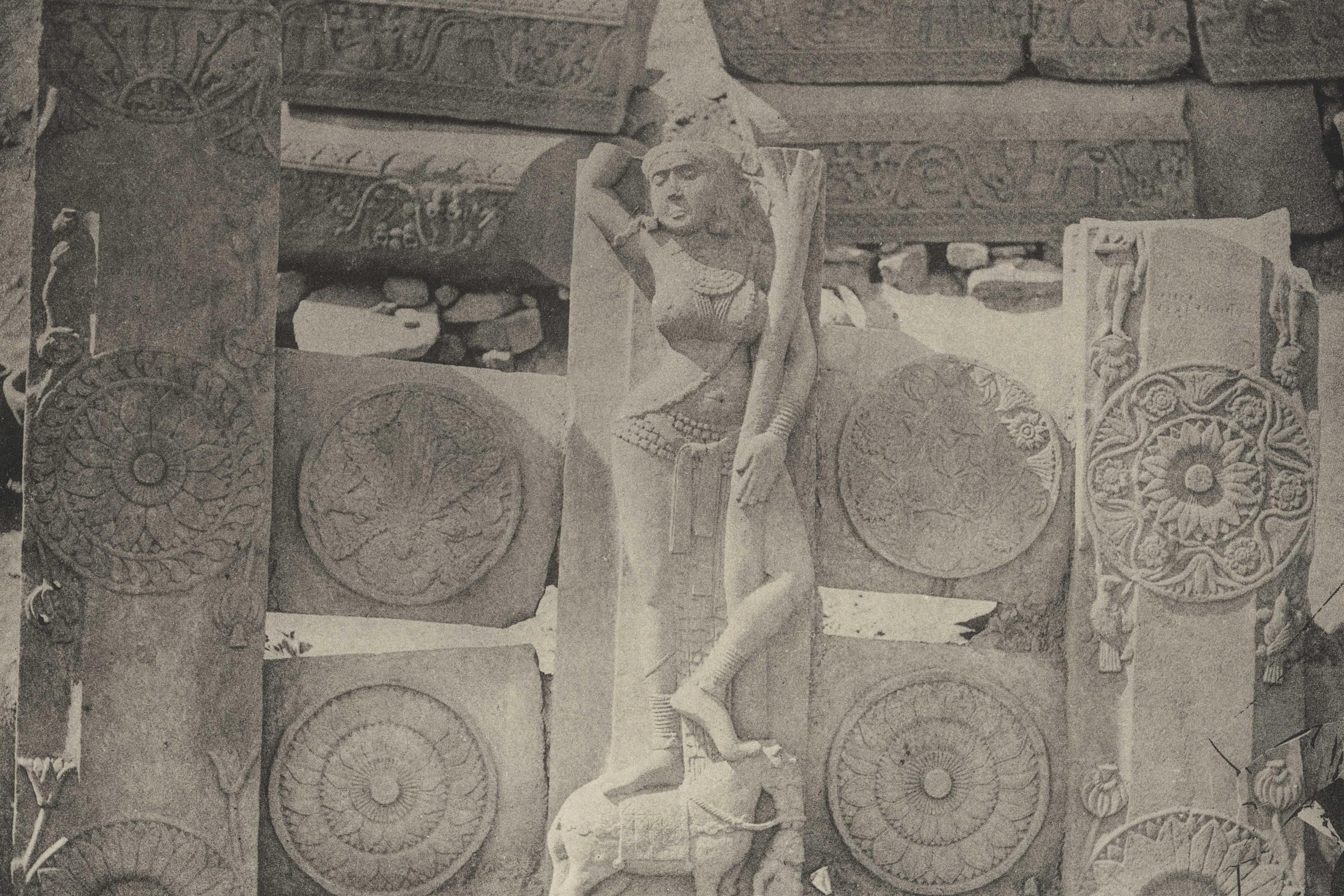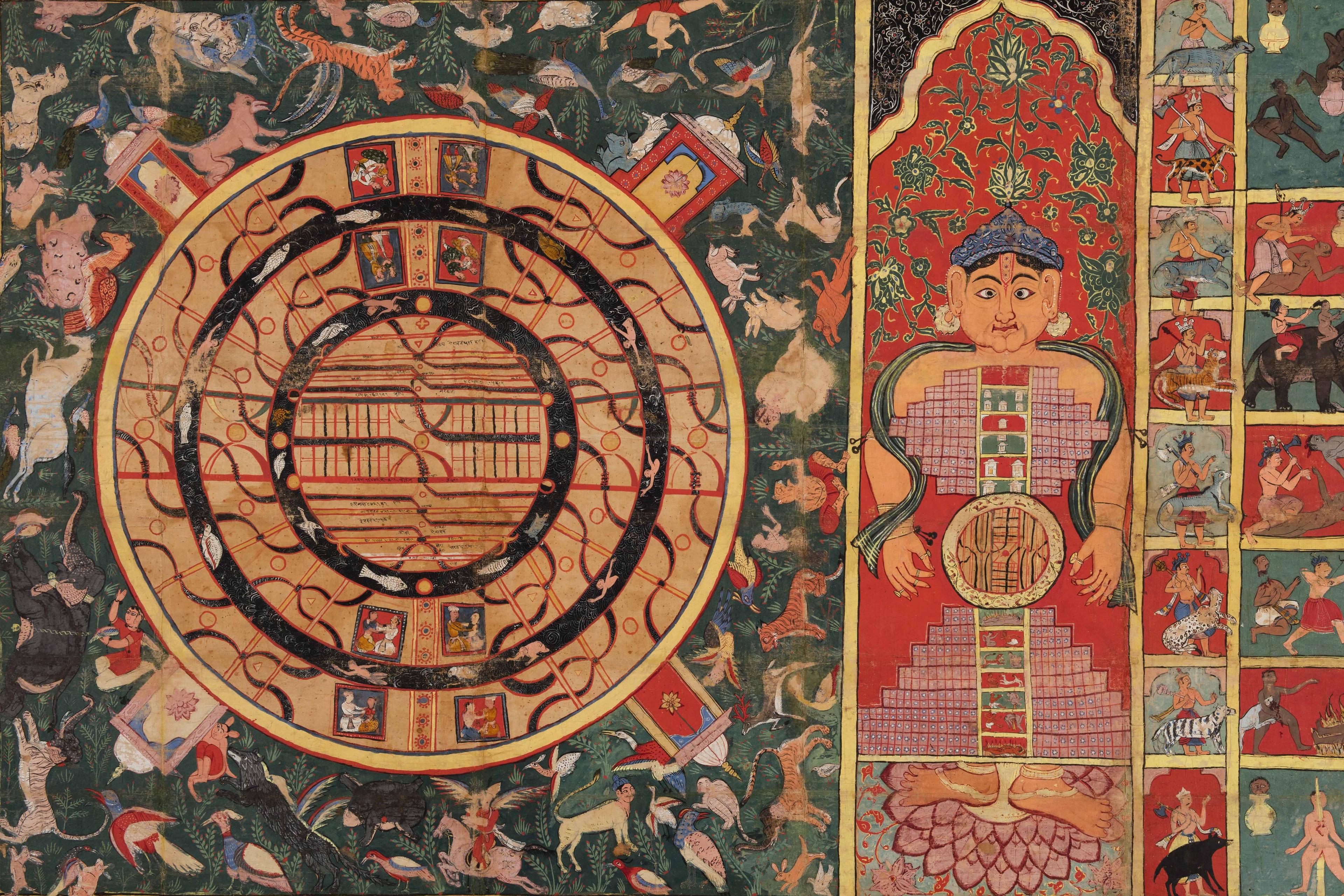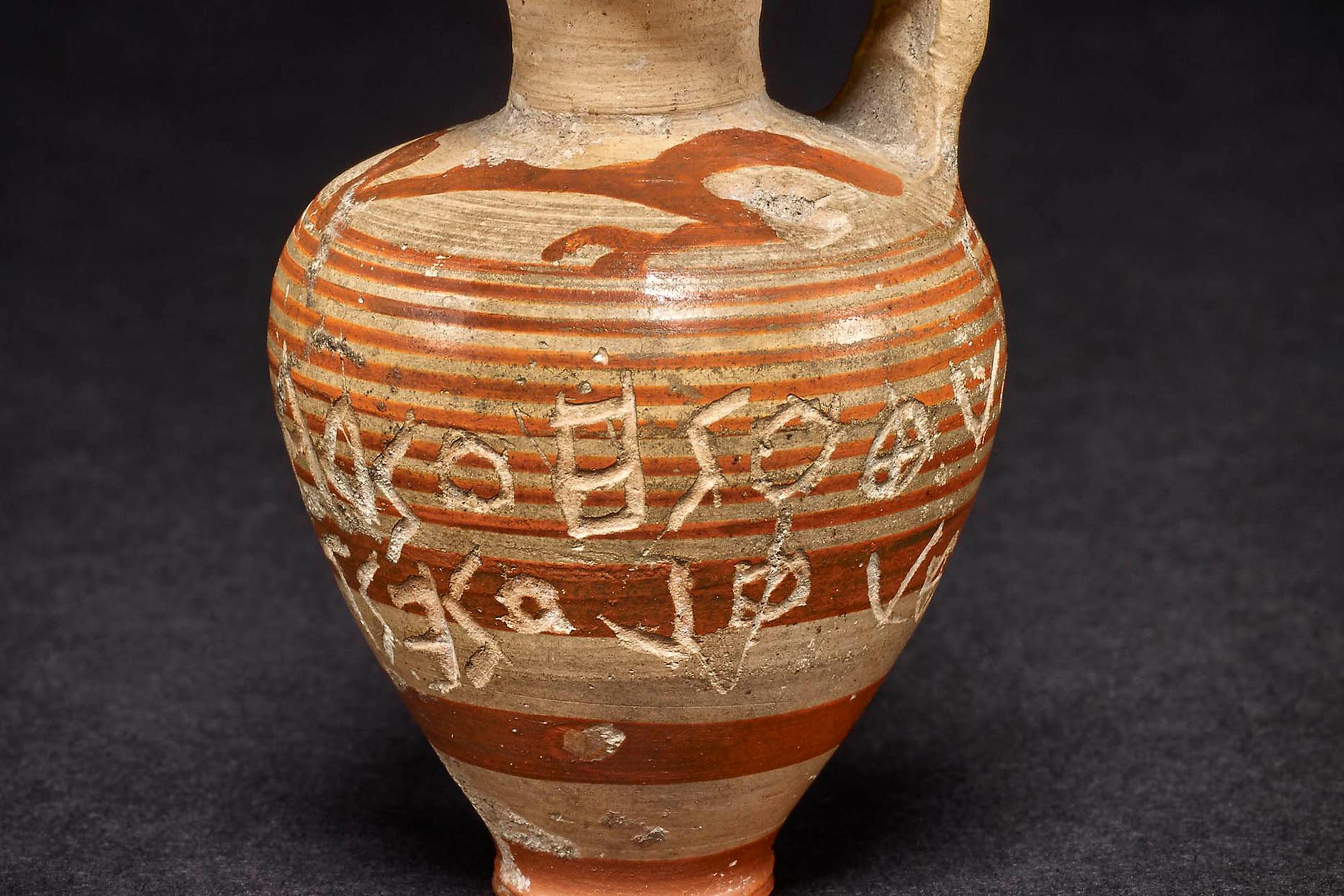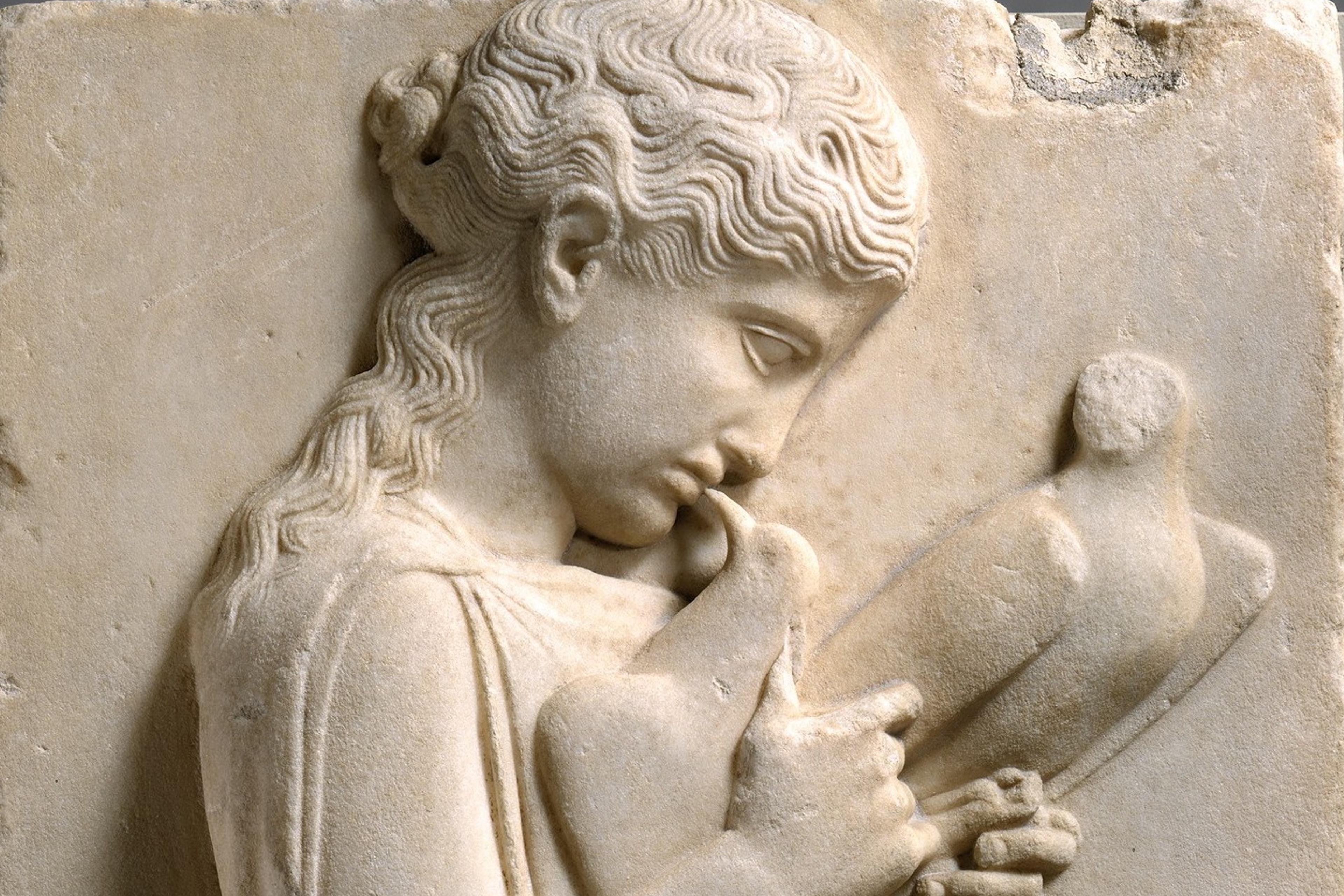Southeast of Mumbai, in a range of rugged hills, a winding path ascends to the mouths of the Karla Caves. On weekends and holidays, when pilgrims crowd the neighbouring temple, the caves echo with footsteps and chatter. But when the monsoon shadows the valley, and waterfalls rush from the surrounding cliffs, it’s easy to imagine the solitude that drew Buddhist monks to this place 19 centuries ago.
Although there are other Buddhist cave complexes nearby, nothing else in India compares with the Grand Chaitya, or prayer hall, at Karla. It plunges deep into the cliff, with a soaring ceiling ribbed with age-blackened teak, the richly ornamented pillars along its walls marching toward the stupa at the distant end, where monks once walked endless circles around a relic of the Buddha. High on the pillars, neat lines of Brahmi script commemorate the donors who contributed to the hall’s construction. The inscriptions are terse: name, native place, and little else. But in six cases, they mention an additional detail: that the donor was a Yavana – a Greek.
The Greeks first entered India two centuries before the Karla Caves began to be carved, when Alexander descended into the Punjab at the head of his invincible army. The conqueror spent a year and a half in the subcontinent, defeating local kings, subjugating cities, and leaving a string of garrisons in his wake. Then, he was gone. It seemed, at first, that the Greek presence in India would be fleeting. Within a few years of Alexander’s death, his Indian satrapies were absorbed into the growing empire of Chandragupta Maurya, whose successors would rule much of India for more than a century. But when the Mauryan Dynasty began to crumble, Greeks were waiting on the frontiers.
Just northwest of India, in what are now Afghanistan and the central Asian republics, lay the Greek kingdom of Bactria, famous for its wealth and its ‘thousand cities’. The Bactrian kings were almost constantly at war, sparring with their Seleucid overlords, raiding the upstart Parthians, and pushing back incursions from the steppes. So when a political vacuum developed in northern India, they were quick to exploit it.
The exact sequence of events is unclear, but it seems that the Bactrian king Demetrius I invaded India in the early 2nd century BCE, conquering a large territory in the northwest. Soon after, probably as a consequence of civil war, the Indian province became an independent Greek state. The rulers of the new Indo-Greek kingdom soon governed more of India than Alexander had ever conquered. Although their fortunes fluctuated, parts of northern India would remain under their rule until the 1st century CE.
Too few and too isolated to remain a class apart, the Greeks in India soon began to adopt local customs. Towards the end of the 2nd century BCE, Heliodorus, ambassador of the Indo-Greek king Antialcidas, set up an imposing stone pillar beside a Hindu temple honouring the deity Vasudeva. Most of the Greeks in India, however, were attracted to a different Indian religious tradition: Buddhism.
Buddhism was already widespread in northwestern India by the time Alexander arrived, and continued to gain converts through the Mauryan era. Ashoka, greatest of the Mauryan emperors, was an energetic patron, founding monasteries, building stupas, and sending missionaries to every neighbouring people – including the Greeks. Ashoka commissioned dozens of monumental inscriptions outlining the ethical precepts of Buddhism. Two of these were written in elegant and sophisticated Greek, a sign that at least a few Greeks were involved in the king’s proselytising project. The inscriptions claim that missionaries were sent to all the Greek kingdoms of the east. According to later Buddhist tradition, some of these missionaries were Greeks themselves.
By the time the Bactrians conquered northwestern India, in short, many eastern Greeks were familiar with Buddhism. Within a century of the conquest, some of the most important men in the Indo-Greek kingdom identified themselves as Buddhists: a provincial governor named Theodorus, for example, is known to have dedicated a Buddhist reliquary, and another Greek governor established a stupa. Many wealthy Greeks, like the benefactors at Karla, were commemorated as donors in Buddhist cave monasteries.
Menander I, the ruler who brought the Greek kingdom in India to the pinnacle of its strength and prosperity, was almost certainly a Buddhist. He patronised Buddhist shrines, put the eight-spoked Dharma wheel on some of his coins, and even appeared – though long after his reign – as the protagonist of a Buddhist text, in which he shrewdly debates a learned monk. Upon his death, Menander’s ashes were enshrined in stupas, where they were revered like the relics of the Buddha himself. Menander’s successors seem to have imitated his pro-Buddhist policies. Most of the later Indo-Greek kings describe themselves as ‘followers of the Dharma’ on their coins. At Taxila, their capital, a Buddhist shrine and stupas stood beside temples to Hindu and Greek gods.
Around the beginning of the 1st century CE, just as the Indo-Greek kingdom was collapsing, contact between India and the rest of the Greek world was renewed. Merchants based in the Egyptian city of Alexandria had discovered that the monsoon winds could carry ships swiftly and relatively safely from the mouth of the Red Sea to the western coast of India. Spurred by Roman demand for spices, hundreds of ships were soon crossing the Arabian Sea. Pliny the Elder complained that 100 million sesterces of gold and silver were being traded to Indian merchants each year. The substance, if not the scale, of his claim is confirmed by the hoards of Roman coins that are still periodically discovered by archaeologists across India.
Despite this contact with India and Indians, the Greeks of the Mediterranean world remained virtually ignorant of Buddhism. Greco-Roman descriptions of Indian religion confuse the Hindu, Buddhist, and Jain traditions, and tend to be heavily influenced by accounts of Alexander’s first encounters with the Indian ascetics whom the Greeks called ‘gymnosophists’ (or naked philosophers). The first explicit mention of the Buddha in a classical text was made by Clement of Alexandria, who noted in passing that a sect of Indian philosophers revere a certain ‘Boutta’ as a god on account of his holiness. Another stray reference appeared in a work of St Jerome, who erroneously described the Buddha as founder of a sect of gymnosophists.
Despite its obscurity, Buddhism may have influenced an important movement in Greek thought. The philosopher Pyrrho of Elis accompanied Alexander to India, where he conversed with monks and ascetics. When he returned to Greece, Pyrrho taught that the goal of existence should be freedom from worry, and that the only way to achieve this freedom was to suspend all judgment about the nature of reality. The parallel with Buddhism – in particular, the idea of virtue as an escape from suffering – is intriguing, though the degree to which Pyrrho was actually inspired by Buddhist doctrine remains unclear.
In any case, even if the Indian roots of Pyrrho’s scepticism can be proven, Buddhism was never a significant presence in the Greco-Roman Mediterranean. But in India, where so many Greeks became Buddhist converts and patrons, the encounter between East and West had lasting consequences. For centuries, it had been customary to represent the Buddha with symbols – often footprints, an empty seat, or the Bodhi tree. But in the later years of the Greek kingdom, anthropomorphic representations of the Buddha began to appear.
These first images of the Buddha, particularly associated with the Gandhara region, show clear signs of Greek influence. They stand like Greek statues. Their expressions and hairstyles resemble those of Greek antecedents. They wear Greek-style tunics, with the finely folded drapery characteristic of Hellenistic art.
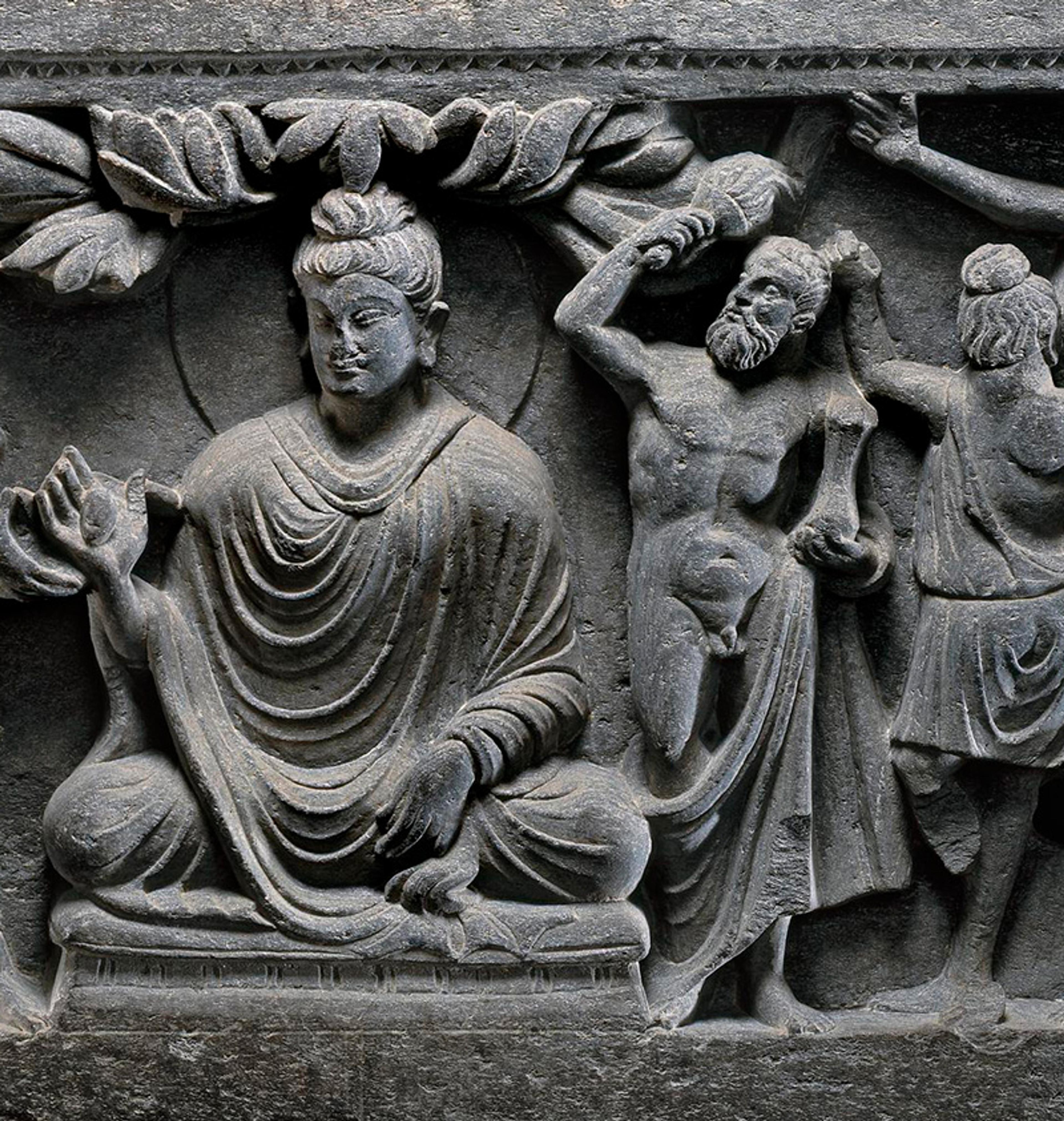
Detail from a frieze depicting the Buddha performing a miracle before the ascetics. On the Buddha’s left, his guardian Vajrapāṇi is depicted in a classically Grecian style. Dated 2nd-3rd century. Courtesy the Trustees of the British Museum
That Greek art shaped the evolution of the Buddha image seems clear. But exactly how and when this influence was exerted is uncertain. Virtually all the extant examples of Gandhara-style art appeared after the fall of the Greek kingdoms, which complicates the idea that its conventions were conceived by Bactrian or Indo-Greek craftsmen. Some scholars have suggested that Greek sculpture influenced the development of the Buddha image less directly, perhaps through the medium of trade goods carried into Central Asia by Parthian or Palmyrene merchants. An alternative theory posits Greek artists and Greek ideas travelling east on the busy Red Sea trade route that connected Roman Alexandria with the ports of western India.
For our purposes, the means of transmission matters less than the fact that the models and iconography of Greek art were integral to the development of an increasingly standardised image of the Buddha. That image would have a long history, moving with the faith into central Asia, China and Japan, and changing as it travelled. Yet, even today, in shrines and sanctuaries scattered across Asia and beyond, it bears traces, faint but real, of the Greek encounter with Buddhism two millennia ago.
